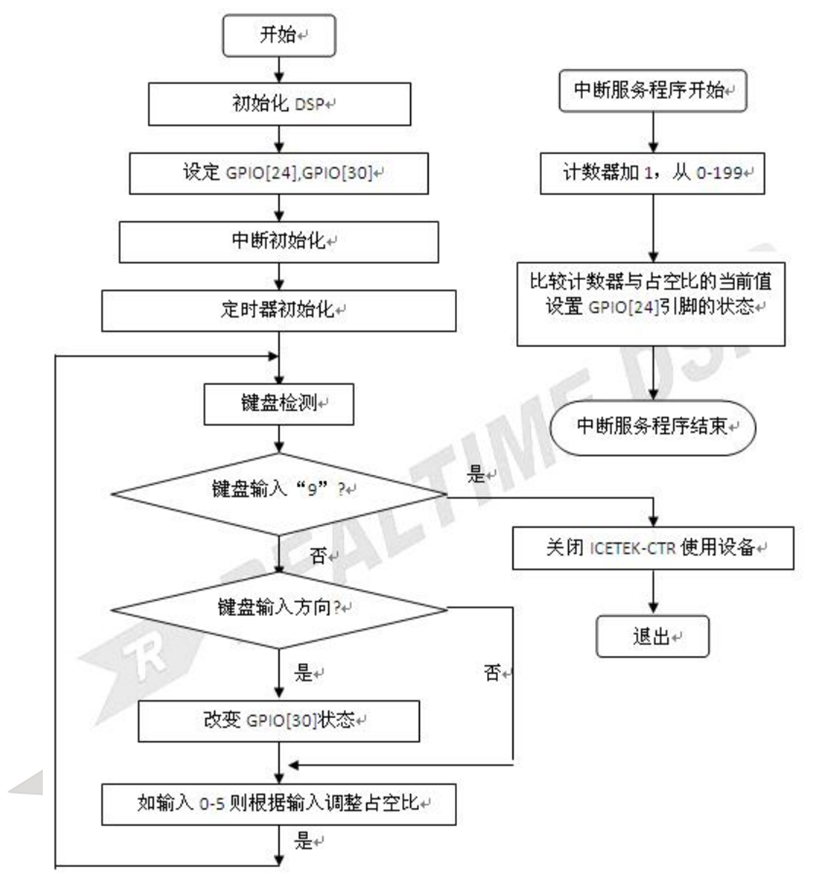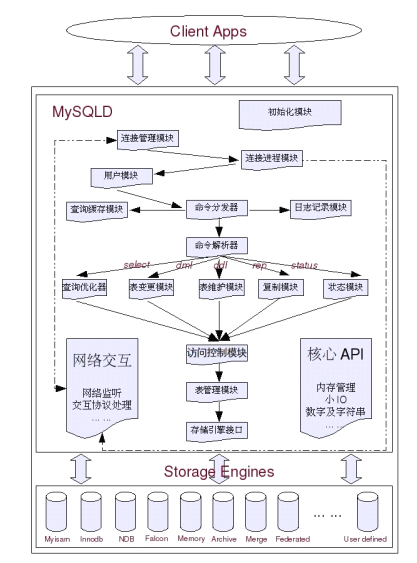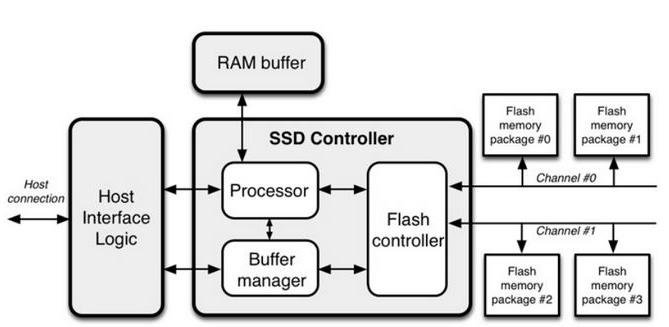作者前言
🎂 ✨✨✨✨✨✨🍧🍧🍧🍧🍧🍧🍧🎂
🎂 作者介绍: 🎂🎂
🎂 🎉🎉🎉🎉🎉🎉🎉 🎂
🎂作者id:老秦包你会, 🎂
简单介绍:🎂🎂🎂🎂🎂🎂🎂🎂🎂🎂🎂🎂🎂🎂🎂
喜欢学习C语言、C++和python等编程语言,是一位爱分享的博主,有兴趣的小可爱可以来互讨 🎂🎂🎂🎂🎂🎂🎂🎂
🎂个人主页::小小页面🎂
🎂gitee页面:秦大大🎂
🎂🎂🎂🎂🎂🎂🎂🎂
🎂 一个爱分享的小博主 欢迎小可爱们前来借鉴🎂
list
- **作者前言**
- list的介绍
- list的简单使用
- reverse
- merge
- unique
- splice
- list的模拟实现
- 迭代器的模拟
- **普通的迭代器**
- const迭代器
- 反向迭代器
- 重载->
list的介绍
list页面
list是可以在常数范围内在任意位置进行插入和删除的序列式容器,并且该容器可以前后双向迭代。
2. list的底层是双向链表结构,双向链表中每个元素存储在互不相关的独立节点中,在节点中通过指针指向
其前一个元素和后一个元素。
3. list与forward_list非常相似:最主要的不同在于forward_list是单链表,只能朝前迭代,已让其更简单高
效。
4. 与其他的序列式容器相比(array,vector,deque),list通常在任意位置进行插入、移除元素的执行效率
更好。
5. 与其他序列式容器相比,list和forward_list最大的缺陷是不支持任意位置的随机访问,比如:要访问list
的第6个元素,必须从已知的位置(比如头部或者尾部)迭代到该位置,在这段位置上迭代需要线性的时间
开销;list还需要一些额外的空间,以保存每个节点的相关联信息(对于存储类型较小元素的大list来说这
可能是一个重要的因素)

#include<iostream>
#include<vector>
#include<list>
using namespace std;
int main()
{list<int> lt;lt.push_back(10);lt.push_back(11);lt.push_back(12);lt.push_back(13);lt.push_back(14);lt.push_back(15);list<int>::iterator it = lt.begin();while (it != lt.end()){cout << *it;it++;}cout << endl;for (auto& e:lt){cout << e;}return 0;
}
前面我们知道,string和vector的遍历方式有迭代器,下标和 地址
但是在list中没有下标,通过地址去访问困难,只能通过迭代器去访问,这个时候就会很方便,不用再和之前的C语言那样,获取到对应的地址进行方位,我们只需获取到对应的迭代器就可以快速,迭代器的优势也慢慢的体现出来了
list的简单使用
经过前面的string和vector我们可以使用一些简单 的成员函数,begin、end等相关的成员函数,我这里不详细的去介绍了,下面我简单的介绍一些不经常讲过的,
reverse
需要注意的是这个名称,在string和vector中是reserve()成员函数,是一个进行空间扩大的函数,这两者是不一样的,而reverse是list中特有的成员函数
进行翻转,把元素从头到尾进行翻转
list<int> lt;lt.push_back(10);lt.push_back(11);lt.push_back(12);lt.push_back(13);lt.push_back(14);lt.push_back(15);list<int>::iterator it = lt.begin();while (it != lt.end()){cout << *it << " ";it++;}cout << endl;lt.reverse();for (auto& e:lt){cout << e << " ";}

merge
合并列表
该算法将一个有序list容器加入另一个有序list容器中,且两个list容器必须都为逆序或顺序
unique
去重
前提条件就是: 相同的元素要站在一堆,最好的方式就是有序
splice
连接
把一个list容器的一些内容或者整个连接到另外一个list容器上面去,右边的list容器就变空了

list的模拟实现
前面我们实现过单链表和双向链表,这次我们模拟实现list和前面的类似
节点的类以及list的类,有两个
我们可以写一个命名空间里面进行
下面我们以这个图为例子

所以我们要创建一个节点类, list里面是一个链表,
节点类:
//节点类template<class T>struct ListNode{public:ListNode<T>* left;ListNode<T>* rigth;T val;ListNode(const T& num = T()):left(nullptr),rigth(nullptr),val(num){}bool operator==(const ListNode<T> n){return this == &n;}};
跟我们刚开始 的C语言的节点写法一样,
迭代器的模拟
普通的迭代器
//迭代器template<class T>class _list_iterator{public:typedef ListNode<T> Node;typedef _list_iterator<T> Self;Node* node;_list_iterator(ListNode<T>* n)//需要注意的是这里尽量不要用引用:node(n){}_list_iterator(const Self& n):node(n.node){}Self& operator++()//前置++{node = node->rigth;return *this;}Self operator++(int)//后置++{Self newnode(*this);node = node->rigth;return newnode;}Self& operator--()//前置--{node = node->left;return *this;}Self operator--(int)//后置--{Self newnode(*this);node = node->left;return newnode;}T& operator*(){return this->node->val;}bool operator!=(const Self& n){return !(*this == n);}bool operator==(const Self& n){return node == n.node;}};
在迭代器类的那里,我们不能使用地址来typedef,因为地址不连续,所以需要写一个迭代器类,迭代器类里面要进行运算符重载,必须重载* 、 != 、前后置++和–, 这里的迭代器只是一个普通的迭代器,如果要实现一个const迭代器就需要另外写法
const迭代器
我们明白const迭代器防止的是指向的内容不能修改,不是迭代器本身不能修改,所以不能在普通迭代器使用const关键字修饰
// const 迭代器template<typename T>class _list_const_iterator{public:typedef ListNode<T> Node;typedef _list_const_iterator const_self;typedef const_self Self;Node const* node;//这里可以不添加const修饰_list_const_iterator( const Node* n):node(n){}Self& operator++() //前置++{node = node->rigth;return *this;}Self operator++(int) //后置++{Self newnode(*this);node = node->rigth;return newnode;}Self& operator--()//前置--{node = node->left;return *this;}Self operator--(int)//后置--{Self newnode(*this);node = node->left;return newnode;}const T& operator*() const{return this->node->val;}bool operator!=(const Self& n) const{return !(*this == n);}bool operator==(const Self& n) const{return node == n.node;}};
这是和普通类相似很多的写法,唯一不同的就是operator那里返回值不同,但是这种写法冗余了,图中的很多函数都加了const修饰this,让起不能修改this的成员,需要注意的就是使用const修饰this, 要知道this的成员是否要修改,根据情况来定,
我们要清楚: const迭代器有两个作用一个是迭代器本身可以修改,一个是其指向的内容不能被修改,如果简单理解为 const iterator就是const迭代器,是错误的,因为这样写只能说明 该值不能被修改,违背了const迭代器的第一个作用.
方法2:
在普通迭代器上再增加一个类型,用来控制operator的返回值
template<class T, class Ref>class _list_iterator{public:typedef ListNode<T> Node;typedef _list_iterator<T,Ref> Self;Node* node;_list_iterator(ListNode<T>* n):node(n){}_list_iterator(const Self& n):node(n.node){}Self& operator++()//前置++{node = node->rigth;return *this;}Self operator++(int)//后置++{Self newnode(*this);node = node->rigth;return newnode;}Self& operator--()//前置--{node = node->left;return *this;}Self operator--(int)//后置--{Self newnode(*this);node = node->left;return newnode;}Ref& operator*(){return this->node->val;}bool operator!=(const Self& n){return !(*this == n);}bool operator==(const Self& n){return node == n.node;}};
反向迭代器
这里我使用的方法是适配器的方法,套一个外壳,只要传入不同的迭代器就可以实现对应的++、–等功能
// 反向迭代器, 使用适配器的方法template<class T, class Ref,class Compart = _list_iterator<T, Ref>>class _list_reverse__iterator{public:typedef _list_reverse__iterator<T,Ref> Self;_list_reverse__iterator(Compart cp):it(cp){}Self& operator++(){it--;return *this;}/* Self& operator++()const{it--;return *this;}*/Self operator++(int){Compart ne = it;it--;return ne;}/* Self operator++(int)const{Compart ne = it;it--;return ne;}*/Self& operator--(){it++;return it;}/* Self& operator--()const{it++;return it;}*/Self operator--(int){Compart ne = *this;it++;return ne;}/*Self operator--(int)const{Compart ne = *this;it++;return ne;}*/bool operator!=(const Self& iter){return it != iter.it;}/*bool operator!=(const Self& iter)const{return it != iter.it;}*/bool operator==(const Self& iter){return it == iter.it;}/* bool operator==(const Self& iter)const{return it == iter.it;}*/Ref& operator*(){return *it;}/*Ref& operator*()const{return *it;}*/private:Compart it;};
这里重载了const修饰的this指针的运算符,可以不看,这里的原理就是, 只要传入不同的迭代器,然后进行对应的操作, 所以说,反向迭代器的实现,就可以解决const反向迭代器的实现了,可以说一举多得
重载->
这里有一个好玩的点
#include<iostream>
#include<list>
using namespace std;
namespace bit
{class AA{public:int a = 10;int b = 20;};template<class T>class BB{public:T* operator->(){return &(this->t);}private:T t;};
}
int main()
{bit::BB<bit::AA> t;cout << t->a << endl;// t.operator->()->acout << t->b << endl;//t.operator->()->breturn 0;
}
需要注意的是这里这里c++会省略一个**->**,增加了可读性,这里本来有两个->,省略了一个,由此可见,我们如果要重载一个->就要注意了
list类:
//迭代器template<class T>class _list_iterator{public:typedef ListNode<T> Node;typedef _list_iterator<T> Self;Node* node;_list_iterator(ListNode<T>*& n):node(n){}_list_iterator(const Self& n):node(n.node){}Self& operator++()//前置++{node = node->rigth;return *this;}Self operator++(int)//后置++{Self newnode(*this);node = node->rigth;return newnode;}Self& operator--()//前置--{node = node->left;return *this;}Self operator--(int)//后置--{Self newnode(*this);node = node->left;return newnode;}T& operator*(){return this->node->val;}bool operator!=(const Self& n){return !(*this == n);}bool operator==(const Self& n){return node == n.node;}};//记得我们模拟实现的list要有哨兵位template<class T>class list{public:typedef ListNode<T> Node;typedef _list_iterator<T> iterator;list()//初始化,创建哨兵位{_head = new Node();_head->left = _head;_head->rigth = _head;}~list(){clear();delete this->_head;cout << "析构完毕" << endl;}list(list<T>& n){//浅拷贝(容易野指针)//this->_head = n._head;_head = new Node();_head->left = _head;_head->rigth = _head;for ( const auto& e : n){push_back(e);}}void swap(list<T>& n){Node* swapelem = this->_head;this->_head = n._head;n._head = swapelem;}list<T>& operator=(list<T> n){////方法1//if (this != &n)//{// clear();// for (const auto& e : n)// {// push_back(e);// }//}//方法2swap(n);return *this;}void clear(){iterator it = begin();while (it != end()){pop_front();it = begin();}}void push_back(const T& num){//方法1/*Node* nextnode = new Node(num);_head->left->rigth = nextnode;_head->left = nextnode;nextnode->rigth = _head;*///方法二inset(end(), num);}iterator begin(){iterator it(_head->rigth);return it;// return _head->rigth 隐式类型转换}iterator end(){//隐式类型转换return _head;}iterator inset(iterator pos, const T& num){Node* cur = pos.node;//记得当前位置Node* prev = cur->left;//上一个Node* newnode = new Node(num);newnode->rigth = cur;cur->left = newnode;newnode->left = prev;prev->rigth = newnode;return newnode;}void push_front(const T& num){inset(begin(), num);}iterator erase(iterator pos){assert(pos != end());Node* prev = (pos.node)->left;Node* next = (pos.node)->rigth;prev->rigth = next;next->left = prev;delete pos.node;return next;}void pop_back(){erase(--end());}void pop_front(){erase(begin());}private:Node* _head;};
我们需要注意的就是迭代器和list 的初始化,
总代码代码如下:
#define _CRT_SECURE_NO_WARNINGS
#include<istream>
#include<list>
#include<iostream>
#include<assert.h>
using namespace std;
namespace bit
{//节点类template<class T>struct ListNode{public:ListNode<T>* left;ListNode<T>* rigth;T val;ListNode(const T& num = T()):left(nullptr), rigth(nullptr), val(num){}bool operator==(const ListNode<T> n){return this == &n;}};//迭代器template<class T, class Ref>class _list_iterator{public:typedef ListNode<T> Node;typedef _list_iterator<T, Ref> Self;Node* node;_list_iterator(ListNode<T>* n):node(n){}_list_iterator(const Self& n):node(n.node){}Self& operator++()//前置++{node = node->rigth;return *this;}Self operator++(int)//后置++{Self newnode(*this);node = node->rigth;return newnode;}Self& operator--()//前置--{node = node->left;return *this;}Self operator--(int)//后置--{Self newnode(*this);node = node->left;return newnode;}Ref& operator*(){return this->node->val;}bool operator!=(const Self& n){return !(*this == n);}bool operator==(const Self& n){return node == n.node;}};// 反向迭代器, 使用适配器的方法template<class T, class Ref,class Compart = _list_iterator<T, Ref>>class _list_reverse__iterator{public:typedef _list_reverse__iterator<T,Ref> Self;_list_reverse__iterator(Compart cp):it(cp){}Self& operator++(){it--;return *this;}/* Self& operator++()const{it--;return *this;}*/Self operator++(int){Compart ne = it;it--;return ne;}/* Self operator++(int)const{Compart ne = it;it--;return ne;}*/Self& operator--(){it++;return it;}/* Self& operator--()const{it++;return it;}*/Self operator--(int){Compart ne = *this;it++;return ne;}/*Self operator--(int)const{Compart ne = *this;it++;return ne;}*/bool operator!=(const Self& iter){return it != iter.it;}/*bool operator!=(const Self& iter)const{return it != iter.it;}*/bool operator==(const Self& iter){return it == iter.it;}/* bool operator==(const Self& iter)const{return it == iter.it;}*/Ref& operator*(){return *it;}/*Ref& operator*()const{return *it;}*/private:Compart it;};// const 迭代器template<typename T>class _list_const_iterator{public:typedef ListNode<T> Node;typedef _list_const_iterator const_self;typedef const_self Self;Node const* node;_list_const_iterator(const Node*& n):node(n){}Self& operator++() //前置++{node = node->rigth;return *this;}Self operator++(int) //后置++{Self newnode(*this);node = node->rigth;return newnode;}Self& operator--()//前置--{node = node->left;return *this;}Self operator--(int)//后置--{Self newnode(*this);node = node->left;return newnode;}const T& operator*() const{return this->node->val;}bool operator!=(const Self& n) const{return !(*this == n);}bool operator==(const Self& n) const{return node == n.node;}};//记得我们模拟实现的list要有哨兵位template<class T>class list{public:typedef ListNode<T> Node;typedef _list_iterator<T, T> iterator;typedef _list_iterator<T, const T> const_iterator;typedef _list_reverse__iterator<T, T,iterator> reverse_iterator;typedef _list_reverse__iterator<T, const T,const_iterator> const_reverse_iterator;list()//初始化,创建哨兵位{_head = new Node();_head->left = _head;_head->rigth = _head;}~list(){clear();delete this->_head;cout << "析构完毕" << endl;}list(const list<T>& n){//浅拷贝(容易野指针)//this->_head = n._head;_head = new Node();_head->left = _head;_head->rigth = _head;for (const auto& e : n){push_back(e);}}void swap(list<T>& n){Node* swapelem = this->_head;this->_head = n._head;n._head = swapelem;}list<T>& operator=(list<T> n){////方法1//if (this != &n)//{// clear();// for (const auto& e : n)// {// push_back(e);// }//}//方法2swap(n);return *this;}void clear(){iterator it = begin();while (it != end()){pop_front();it = begin();}}void push_back(const T& num){//方法1/*Node* nextnode = new Node(num);_head->left->rigth = nextnode;_head->left = nextnode;nextnode->rigth = _head;*///方法二inset(end(), num);}iterator begin(){iterator it(_head->rigth);return it;// return _head->rigth 隐式类型转换}const_iterator begin() const{const_iterator it(_head->rigth);return it;}reverse_iterator rbegin(){return --end();}const_reverse_iterator rbegin() const{return --end();}iterator end(){//隐式类型转换return _head;}const_iterator end() const{const_iterator it(_head);return it;}reverse_iterator rend(){//隐式类型转换return end();}const_reverse_iterator rend()const{//隐式类型转换return end();}iterator inset(iterator pos, const T& num){Node* cur = pos.node;//记得当前位置Node* prev = cur->left;//上一个Node* newnode = new Node(num);newnode->rigth = cur;cur->left = newnode;newnode->left = prev;prev->rigth = newnode;return newnode;}void push_front(const T& num){inset(begin(), num);}iterator erase(iterator pos){assert(pos != end());Node* prev = (pos.node)->left;Node* next = (pos.node)->rigth;prev->rigth = next;next->left = prev;delete pos.node;return next;}void pop_back(){erase(--end());}void pop_front(){erase(begin());}private:Node* _head;};}
int main()
{bit::list<int> lt1;lt1.push_back(222);bit::list<int> lt;lt = lt1;lt.push_front(10);lt.push_front(12);lt.push_front(13);lt.push_front(14);lt.push_front(15);lt.push_front(16);lt.pop_back();lt.pop_front();//bit::list<int>::iterator it = lt.begin();//lt.erase(it);//lt.clear();//it = lt.begin();//while (it != lt.end())//{// cout << *it << endl;// it++;//}//it--;//cout << *it-- << endl;const bit::list<int> lt2(lt);bit::list<int>::const_reverse_iterator const_it = lt2.rbegin();while (const_it != lt2.rend()){cout << *const_it << endl;const_it++;}//for (auto& e : lt2)//{// cout << e << endl;//}//for (const auto& e : lt)//{// cout << e << endl;//}return 0;
}



















![将元组类型的日期时间转换为字符串格式time.asctime([t])](https://i-blog.csdnimg.cn/direct/a68650309e3f433bbf07d78318ed83c2.png)